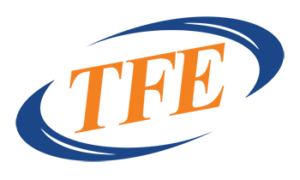Top 5 learning portals for schools and students
The COVID-19 pandemic paused all school activities for the better part of 2020. With millions of students at home due to nationwide school closures, educators and parents had to get creative about teaching. The only viable solution was online-based distance learning via various learning portals. The trend caught on so quickly that at one point, nearly 93 percent of households with school-age children reported involvement in distance learning.
Will distance learning outlive the pandemic?
Thanks to the ongoing vaccine rollout, schools have started reopening while still observing COVID-19 rules. Additionally, many schools will soon end their virtual learning programs as fall approaches. But will that mean an end to remote learning? Well, not exactly.
Reports show that state governments have divided opinions over enforcing in-person attendance with no remote learning once schools fully reopen. However, the general preference among most students and parents is to continue e-learning alongside the traditional classroom setup – hybrid or blended learning.
Hybrid learning has become a popular and favored compromise in many school districts. This trend is expected to continue well into the coming years or at least throughout this adjustment period.
Also, while many districts have already voted to return to in-person only learning for the 2021-2022 school year, virtual and cloud based learning applications have become increasingly integrated into the in-person classroom. Virtual learning management platforms make assignment communication, grading, and overall progress tracking easier for teachers and the school while keeping parents more informed timely.
Every school should offer the flexibility needed for coping with prevailing circumstances. However, a critical aspect of continually improving the learning experience is simply keeping up with the technology trends both in your curriculum and the overall learning experience . Whether your district maintains virtual learning applications and portals for COVID-safe learning options or you are simply trying to give your students a tech leg-up by exposing them to a variety of computer softwares and applications early , it’s critical to ensure your school has the right resources. Here is a list of five premium learning portals that can help you do that:
Google Classroom
Technically, Google Classroom is not a standalone learning management system (LMS). Instead, Google describes it as “mission control for your classroom.” The platform incorporates Google’s Workspace tools into a student-teacher learning setting. Google Classroom is available for free to institutions using Google Apps for Education. There’s also a paid tier with extra features and premium support.
Microsoft’s Office 365 Education
Like Google, Microsoft has also packaged some of its enterprise collaboration tools into a school-based learning portal. Office 365 Education includes Word, PowerPoint, Excel, OneNote, and Teams. It also hosts additional classroom tools such as OneNote Class Notebooks, end-to-end assignment management, and School Data Sync features.
LinkedIn Learning
LinkedIn Learning, formally Lynda, is a self-paced online learning platform offering video courses and learning paths. Through LinkedIn Learning, teachers can create, distribute, and share educational material with students in structured video lessons. Educators can also track each student’s progress and even offer quizzes, exams, and exercises at the end of every class.
Canvas
Canvas is an all-out LMS with five role designations: Admin, Instructor, Instructional Designer, Observer/Parent, and Student. The web-based learning platform hosts several customizable course creation and management tools, analytics and statistics, and internal communications features. This is one of the few learning portals designed from the ground up as a virtual classroom.
Blackboard
Blackboard is yet another popular LMS designed for blended and web-assisted learning. The platform supports both synchronous and asynchronous learning environments. In synchronous learning, students and teachers engage in real-time interactions. Asynchronous learning spans over extended periods of time, letting students own the schedule within a specified timeframe. Blackboard is ideal for collaborative learning and course-based teaching as well as fully online and hybrid classroom setups.
For the most part, the effectiveness of hybrid learning comes down to the tools and infrastructure powering the virtual classes. Any of these learning portals are a great starting point for creating a blended learning environment. The most important thing is understanding the features and capabilities each platform offers and how your faculty and students can leverage them.
However, building the IT infrastructure for blended learning from scratch can prove challenging; let TFE lend you a helping hand. Our experienced team of IT experts is dedicated to empowering Texas schools, from K-12 to higher learning institutions, to unlock their potential through innovation. Reach us through our website or call 888.902.5563 to learn more about our services.










